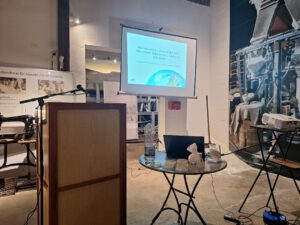In October, the DLR was back at the Deutsches Salzmuseum for another sampling and presentation. Lüneburg, also known as the Salt City of the North, was the largest salt producer in Europe for a long time. This is because there is an almost completely saturated salt brine below the town, which used to be extracted and boiled through hard work and finally sold as crystalline salt. Production ceased 40 years ago, but you can still visit the old production site, which has now been converted into a museum. The DLR chose this particular habitat because it is an extreme but easily accessible habitat. Salt-loving (halophile) archaea are the main organisms in this habitat, which can withstand the salt content of almost 30%. They are mostly polyextreme and can also survive in Mars-like environments, which is why this group of microorganisms in particular is relevant for space research.

